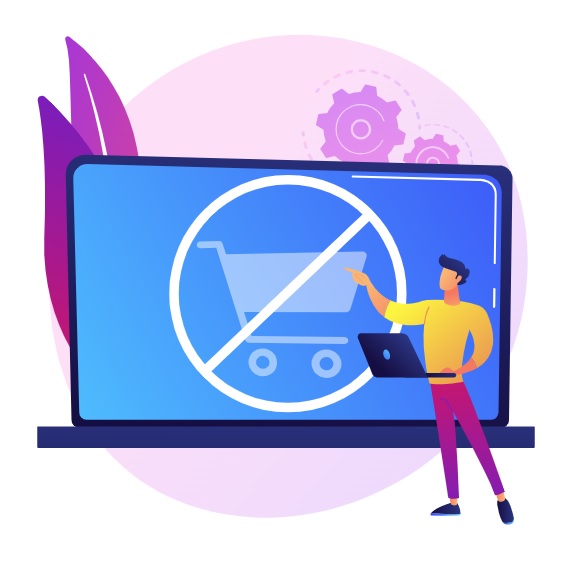Introduction
One of the greatest pains of e-commerce today is carts being abandoned. According to research, 70% of online shoppers abandon their shopping carts at a point before going on to make a purchase. This represents lost revenue and opportunity. However, businesses can significantly increase their conversion rates and boost revenue by understanding why customers leave their carts and implementing strategies to address these issues.
This article will explore practical ways to reduce cart abandonment and turn more visitors into paying customers.
1. Understanding Cart Abandonment: Why Shoppers Leave
Before solving the problem, let’s dig deeper into why customers abandon their carts. Here are the common reasons:
- Unanticipated extra expenses that arise, such as shipping, taxes, or fees
- Checkout processes that are complex or lengthy
- Insecurity against payment
- Few payment options
- Technical failures or slow website performance
- Forcing the creation of accounts before checkout
- Comparison shopping (shoppers browse but don’t commit)
- Unclear return or refund policies
Identifying the primary reasons for abandonment helps create targeted solutions.
2. Optimize the Checkout Process for Simplicity
A lengthy and complicated checkout process is a major conversion killer. Simplify the process with these steps:
- Reduce the number of form fields to only essential information.
- Implement a guest checkout option for faster transactions.
- Use auto-fill and predictive text to speed up the process.
- Offer a progress indicator to show customers how close they are to completion.
- Ensure the checkout page is mobile-friendly.
A streamlined checkout experience leads to higher completion rates and fewer drop-offs.
3. Offer Multiple Payment Methods
Shoppers have different payment preferences. In diversifying payment methods, we want to draw on a broader audience. The vast majority admire:
- Credit and debit cards
- PayPal and digital wallets (Apple Pay, Google Pay)
- Buy Now, Pay Later services (Klarna, Afterpay)
- Cryptocurrency and alternative payment methods
A broader range of payment options reduces friction and increases conversions.
4. Be Transparent About Costs Upfront
It is the cost and price of things that occur in the store, though unexpected costs at checkout can give a customer a bit of sticker shock.
- Display shipping fees, taxes, and additional charges early in the buying process.
- Offer free shipping or discounts on minimum purchases.
- Provide a cost calculator before checkout.
Customers who know exactly what to expect are less likely to abandon their purchase.
5. Build Trust with Security Features
Security concerns can prevent customers from completing their purchases. Reassure them by:
- Displaying trust badges (SSL certificates, payment security logos, customer reviews)
- Offering secure payment gateways
- Providing a clear refund and return policy
- Showcasing customer testimonials and social proof
The more trust customers have in your store, the more likely they are to complete their transactions.
6. Use Exit-Intent Popups to Capture Sales
Exit-intent popups detect when a shopper is about to leave your site and provide one last compelling offer. Examples include:
- A discount or special offer to incentivize the purchase.
- A reminder about limited stock availability.
- A free shipping coupon to eliminate extra costs.
These popups can recover a lot of lost sales by encouraging users to finish the purchasing process.
7. Implement Cart Recovery Emails and SMS Reminders
Minor nudges are usually needed to help shoppers revisit the site and complete their purchase. Potent tools in this regard are the cart recovery emails and SMS messages.
- Send timely and personalized reminders within a few hours.
- Include an image of the abandoned product to reignite interest.
- Offer a limited-time discount or free shipping to encourage action.
- Use compelling subject lines to increase open rates.
Studies show that cart recovery emails can recover up to 30% of abandoned sales.
8. Enable Persistent Shopping Carts
Persistent carts save a shopper’s items even if they leave and return later. This is especially helpful for:
- Customers browse across multiple devices.
- Shoppers who want time to consider their purchase.
- People who get distracted and forget about their cart.
Keeping items in the cart increases the chances of eventual conversion.
9. Optimize Website Performance and Speed
All kinds of slow websites annoy people with the worst site running speed. Here are a few ways to speed up a site:
- Compressing images to reduce load time.
- Using a content delivery network (CDN).
- Minimizing unnecessary plugins and scripts.
- Ensuring a mobile-friendly experience.
Fast-loading pages contribute to the smoother checkout process of the following big conversion points, which is a lower abandonment rate.
10. Offer Live Chat Support for Quick Assistance
In some instances, shoppers visit the material to empty their shopping carts; therefore, offering real-time support can help clarify specific issues, such as the following:
- Product-related concerns
- Payment issues
- FAQ about shipping and returning policies
- General Troubleshooting
Real-time assistance is effective in boosting customer confidence and lower abandonment rates.
Conclusion
This includes addressing cart abandonment, one of eCommerce’s most critical challenges. Businesses can improve conversion rates by identifying the causes of cart abandonment and implementing a well-strategized approach.
Enhancing the checkout process, offering diverse payment options, and leveraging retargeting efforts can have a significant impact on sales and customer satisfaction. Partnering with a trusted web development company in coimbatore can help businesses optimize their eCommerce strategies, reduce cart abandonment, and drive higher conversions.


Leave a Reply
You must be logged in to post a comment.